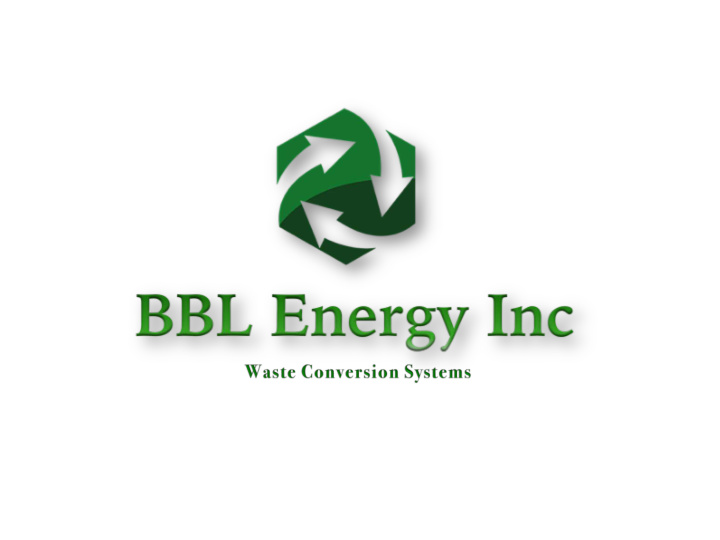



Waste to Energy The process is based on low- temperature pyrolysis involving the application of indirect heat to thermally decompose the feedstock (raw material) in the absence of oxygen. Marketable products are obtained as a result of the processing of raw materials such as tires, mixed packaging plastics, expanded polystyrene and a wide range of other feedstock's. The process can also accept the addition of mixed waste oil along with the dry feedstock with no adverse affect to the process.
Waste to Energy
Waste to Energy The Waste to Energy technology solution provides an environmentally sound alternative to incineration or landfilling of a wide range of recurring waste materials. The systems can process tires, mixed plastics, waste oil, biomass and sewage sludge. It can also process mixed materials combined in the same processing cell. The system capacities can be configured to best suit the available local waste feedstock and processing rates can range from 24 tons per day up to 48 tons per day in a system configuration depending on the specific requirements and feedstock availability. Multiple units can be deployed and configured in modular format allowing for different feedstock processing at the same facility.
Waste to Energy The outputs of the process are liquids, gas and carbon residue, all energy rich products which can be further processed to produce a "drop-in" fuel supplement, heating oil/boiler fuel, and process gasses which are suitable for fuelling a localized CHP/electrical generator. The carbon residue is a solid fuel product of high calorific value. Some of the process gas is used to generate the electrical energy required for autonomous process running if desired with the surplus being made available for other uses including powering auxiliary equipment.
Waste to Energy The gas emanating from the system during the thermal conversion process is directed through a water cooled condensing phase where all of the condensible gases are converted to a liquid hydrocarbon fuel mix which drains into designated holding tanks. The non-condensible gasses pass through a further cooling and scrubbing phase before being directed to the systems integral gas storage system from where it feeds the cogeneration CHP unit providing the electrical power source for the process energy. Surplus gas in the storage system can then feed additional CHP units connected to the electricity grid or locally end users such as hotel, nursing home or manufacturing facility who can also benefit from the piped hot water available at approximately 80degrees C (176 F)
Waste to Energy
Waste to Energy
Waste to Energy Variants of the same core technology can be configured to maximize the use of available waste materials at varying scale and feedstock makeup. Depending on volumes and quality of the waste material additional modules can be added to achieve any output objectives. The process represents a sustainable and much more environmentally friendly method of processing packaging plastics, tires and other organic waste materials at commercial scale mitigating substantial environmental damage when compared to incineration and or large scale long term environmental exposure. The technology is fully EU/CE certified and is ATEX compliant. Emissions outputs are some of the lowest levels in the pyrolysis industry and well below stringent EPA requirements
Waste to Energy By way of example a standard 6 module configuration plant layout processing tires at 24 TPD (tons per day) capacity could produce combined liquid and gas outputs capable of fuelling 2000kw per hour of electrical energy while also producing a further 2MW of thermal energy per hour. The dry carbon residue (approx. 900lbs) is suitable as an additional fuel product which could be mixed with other biomass to increase its CV as solid fuel briquettes. This material has a high calorific value of 30-35MJ/M3 depending on the organic % of the input material.
Waste to Energy
Waste to Energy
Waste to Energy
Recommend
More recommend